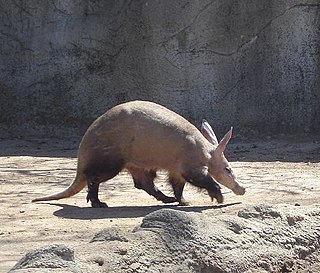
The aardvark is a medium-sized, burrowing, nocturnal mammal native to Africa. It is the only living species of the order Tubulidentata, although other prehistoric species and genera of Tubulidentata are known. Unlike most other insectivores, it has a long pig-like snout, which is used to sniff out food. It roams over most of the southern two-thirds of the African continent, avoiding areas that are mainly rocky. A nocturnal feeder, it subsists on ants and termites, which it will dig out of their hills using its sharp claws and powerful legs. It also digs to create burrows in which to live and rear its young. It receives a "least concern" rating from the IUCN, although its numbers seem to be decreasing.

The aardwolf is an insectivorous mammal, native to East and Southern Africa. Its name means "earth-wolf" in Afrikaans and Dutch. It is also called "maanhaar-jackal", "|gīb" by the Nama people,"termite-eating hyena" and "civet hyena", based on its habit of secreting substances from its anal gland, a characteristic shared with the African civet. The aardwolf is in the same family as the hyena. Unlike many of its relatives in the order Carnivora, the aardwolf does not hunt large animals. It eats insects and their larvae, mainly termites; one aardwolf can lap up as many as 250,000 termites during a single night using its long, sticky tongue. The aardwolf's tongue has adapted to be tough enough to withstand the strong bite of termites.
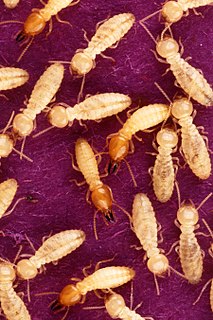
Termites are eusocial insects that are classified at the taxonomic rank of infraorder Isoptera, or as epifamily Termitoidae within the order Blattodea. Termites were once classified in a separate order from cockroaches, but recent phylogenetic studies indicate that they evolved from cockroaches, as they are the sister group to wood eating cockroaches of the genus Cryptocercus. Previous estimates suggested the divergence took place during the Jurassic or Triassic. More recent estimates suggest they have an origin during the Late Jurassic, with the first fossil records in the Early Cretaceous. About 3,106 species are currently described, with a few hundred more left to be described. Although these insects are often called "white ants", they are not ants, and are not closely related to ants.

The numbat also known as the noombat or walpurti, is an insectivorous marsupial. It is diurnal and its diet consists almost exclusively of termites.
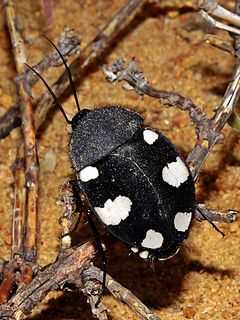
Blattodea is an order of insects that contains cockroaches and termites. Formerly, the termites were considered a separate order, Isoptera, but genetic and molecular evidence suggests an intimate relationship with the cockroaches, both cockroaches and termites having evolved from a common ancestor. The Blattodea and the mantises are now all considered part of the superorder Dictyoptera. Blattodea includes approximately 4,400 species of cockroach in almost 500 genera, and about 3,000 species of termite in around 300 genera.

Cockroaches are insects of the order Blattodea, which also includes termites. About 30 cockroach species out of 4,600 are associated with human habitats. Some species are well-known as pests.

Amitermitinae is a disputed subfamily of "higher termites" now often merged with the subfamily Termitinae and is considered by ITIS as a synonym; it had previously been placed in the family Rhinotermitidae.

Rhinotermitidae is a family of termites (Isoptera). They feed on wood and can cause extensive damage to buildings or other wooden structures. About 345 species are recognized, among these are severe pests such as Coptotermes formosanus, Coptotermes gestroi, and Reticulitermes flavipes.
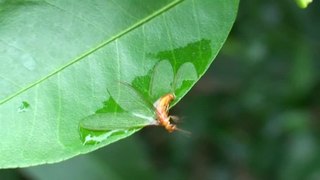
Schedorhinotermes is a South-East Asian and Australasian genus of termites in the family Rhinotermitidae.

Psammotermes is a genus of termites in the family Rhinotermitidae. It is found living in subterranean nests in arid parts of Africa.
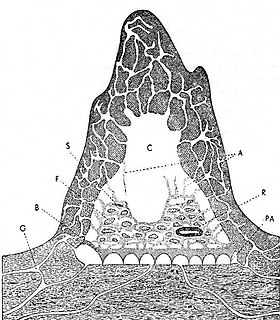
Macrotermes is a genus of termites belonging to the subfamily Macrotermitinae and widely distributed throughout Africa and South-East Asia. Well-studied species include Macrotermes natalensis and M. bellicosus.
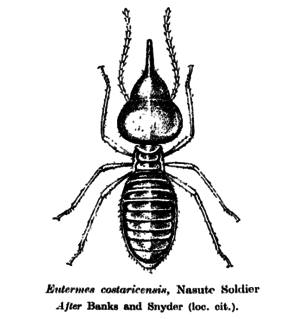
The Nasutitermitinae are a subfamily of termites that includes more than 80 genera. They are recognisable by their lack of visible mandibles and pointed process on the front of their heads.
Termitinae is a subfamily of termites; Amitermes and certain other genera have previously been placed in the Amitermitinae, with some workers arguing that the latter have morphologically distinct characteristics and "some important attributes that affect soil".

Macrotermes carbonarius is a species of termite in the genus Macrotermes, found in Cambodia, Indonesia, Malaysia, Singapore, Thailand and Vietnam.
Macrotermes gilvus is a species of termite in the genus Macrotermes, found in Cambodia, East Timor, India, Indonesia, Malaysia, Myanmar, Philippines, Singapore, Thailand and Vietnam.
Zootermopsis laticeps, known generally as Arizona dampwood termite, is a species of termite in the family Archotermopsidae. Other common names include the wide-headed rottenwood termite and southwestern rottenwood termite. It is found in arid parts of southwestern North America.

Stolotermitidae is a family of termites in the order Blattodea. There are about 14 described species in Stolotermitidae.
Hospitalitermes is an Asian–Papuan genus of lichen eating termite in the subfamily Nasutitermitinae. There are 37 species currently listed. They commonly inhabit cavities inside of living trees excavated by other species of termite.

Termes is a genus of higher termites in the subfamily Termitinae. The type genus of its family, it has a pantropical distribution and has included other species, now placed in other genera; there are also a number of extinct species.














